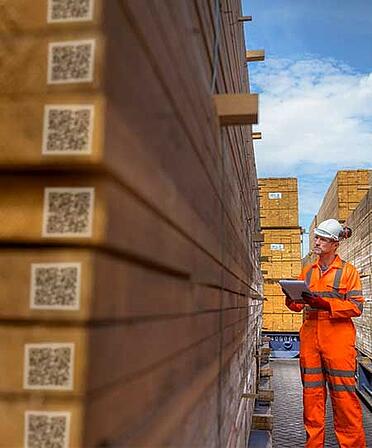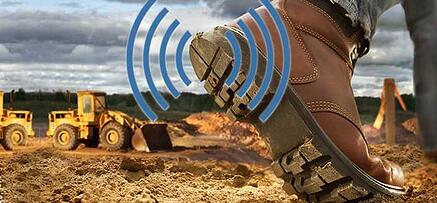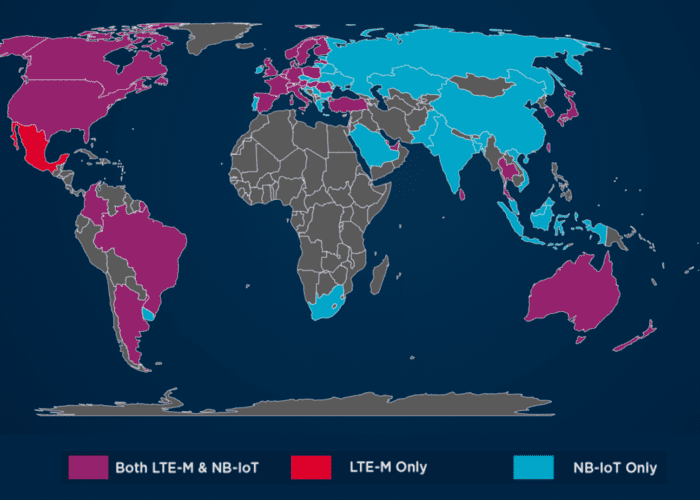However, despite these growth trends, the construction industry is experiencing a shortage of workers. The Bureau of Labor Statistics Job Openings and Labor Turnover Survey reports that there are nearly 200,000 unfilled construction industry jobs in the United States. Worker shortages, when combined with an industry that is experiencing continued growth, have resulted in many construction sites operating with skeleton crews. Understaffed construction sites present a number of compromises in both time and productivity that could ultimately hurt the bottom line of construction companies and the developers that engage their services. As a result, companies are looking to the Internet of Things (IoT) to pick up the slack and work smarter with smaller construction crews.
IoT Enhanced Collaboration and Automated Workflows
Through the use of IoT-enabled collaboration tools, construction workers have the ability to work smarter than ever before, reducing the number of people needed for complex projects and helping lower labor costs. For example, drones mounted with sophisticated 3D mapping capabilities can scan the job site and feed the information into a Building Information Modeling (BIM) system, which then creates accurate 3D models of the work in progress. These models can then be updated with ease by the job manager, instantly notifying every worker and manager of the changes. Capturing data on the job site and uploading it to an IoT platform in real time also allows stakeholders to receive up-to-the-minute progress reports and access video of the construction site, giving them the ability to gauge the status of a project and make adjustments, as necessary, to keep the project on track.
Sensors and RFID tags on building materials and equipment can help in both predictive maintenance and proactive ordering. For example, when an employee checks out or ships material to a job site, an IoT platform automatically can update inventory and send alerts when inventory is low. Similarly, sensors on equipment can monitor usage levels and provide information about the health of mechanical assets, such as pumps, elevators, and HVAC compressors. The IoT platform then can flag potential issues and recommend preventive maintenance to increase equipment uptime and reduce maintenance costs.
In Construction, Safety Always is the Highest Priority
In the midst of all these improvements to communication, productivity, and efficiency, safety still is the highest priority of any construction site. According to the Occupational Safety & Health Administration (OSHA), one in five worker deaths in the United States were in the construction industry in 2017. The most common causes of these deaths, what OSHA deems the fatal four, are falls, being struck by an object, electrocution, and being caught in or between machinery, equipment, or materials. While construction sites take extreme care to maintain the highest level of safety practices possible, including continuous safety training and strict safety protocols followed by everyone on the job site, IoT offers ways to potentially enhance safety efforts.
Preventing Worker Fatigue with IoT Connected Boots
IoT can enhance safety efforts in wearable technology. Industrial IoT sensors embedded in protective equipment, such as vests and helmets, can monitor a workers vitals to prevent accidents before they happen. SolePower, an IoT company that embeds IIoT sensors in the soles of work boots, can preemptively identify fatigued employees by a set of parameters, such as the change in their gait. Productivity measurements then can be developed by task as fatigue increases, making it possible to calibrate the point where a worker is no longer safe or if they have reached a point of diminishing returns.
FUSE Platform: Preventing Risk of Injury with Wearable Sensor Technology
Worker safety also extends to worker health. Construction workers often experience musculoskeletal injuries as a result of the repetitive motions required by their jobs. To ensure that construction workers receive the support they need to stay healthy and avoid these types of injuries, StrongArm Technologies has designed the FUSE Platform, which uses wearable sensors to analyze a workers risk of developing a musculoskeletal injury. Data is sent from the sensors to the IoT platform to determine a given workers safety score, which is an ergonomic risk metric. The FUSE Platform also can capture workplace stressors, like noise and temperature, that can exacerbate workers risk of injury.
In addition to providing companies with the ability to monitor and manage their employees risk of developing a musculoskeletal injury, the FUSE sensor has the ability to deliver haptic feedback to the worker in real time. Based on customizable thresholds, the sensor buzzes when the worker performs a particularly risky motion in order to remind them to keep their form and act safely.
In a fully integrated construction project, where every worker is equipped with wearable IoT devices such as SolePower and the FUSE Platform, data could significantly increase the overall safety of everyone on the job site, reduce emergency response times, and provide greater accountability among the workforce.
Manage Your Deployment with the Aeris Connectivity Platform
As the construction industry continues its upward growth, industrial IoT solutions will become more integral in meeting the productivity and safety challenges at construction sites. In order to get the most out of these deployments, developers and construction companies need a scalable IoT solution backed by experience and expertise.
Aeris offers unparalleled insight into a company’s operations through a fully customizable IoT infrastructure. The Aeris Intelligent IoT Network is the construction managers eyes and ears, analyzing data from job sites in real time and presenting actionable information to ensure that construction is proceeding efficiently and that workers are safe. Aeris platforms are designed for speed, agility, flexibility, scalability, and security thereby making it the ideal solution for deployment in industrial settings where up-to-the-minute information is key to successful operations.
To learn more about how IoT can help your bottom line in construction and ensure the safety of your workers, connect with Aeris today.




